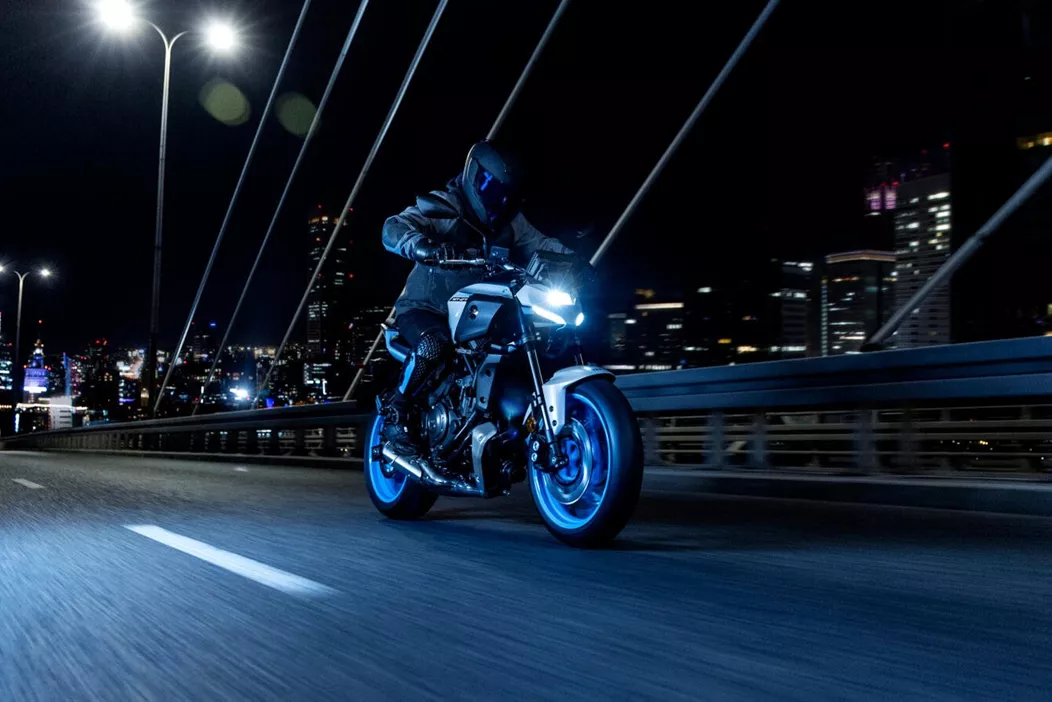My colleague Horvath has already summarized all the new features and updates for the Yamaha MT-07 2025 here. We also have a video on it. Therefore, this review will focus on how all these changes perform in everyday riding. The fourth generation has been so thoroughly revamped that we want to briefly highlight the main features: new design, extensive electronics update, two different transmission options, completely new suspension, radial front brake calipers, new ergonomics, and Euro5+ updates for the renowned CP2 engine.
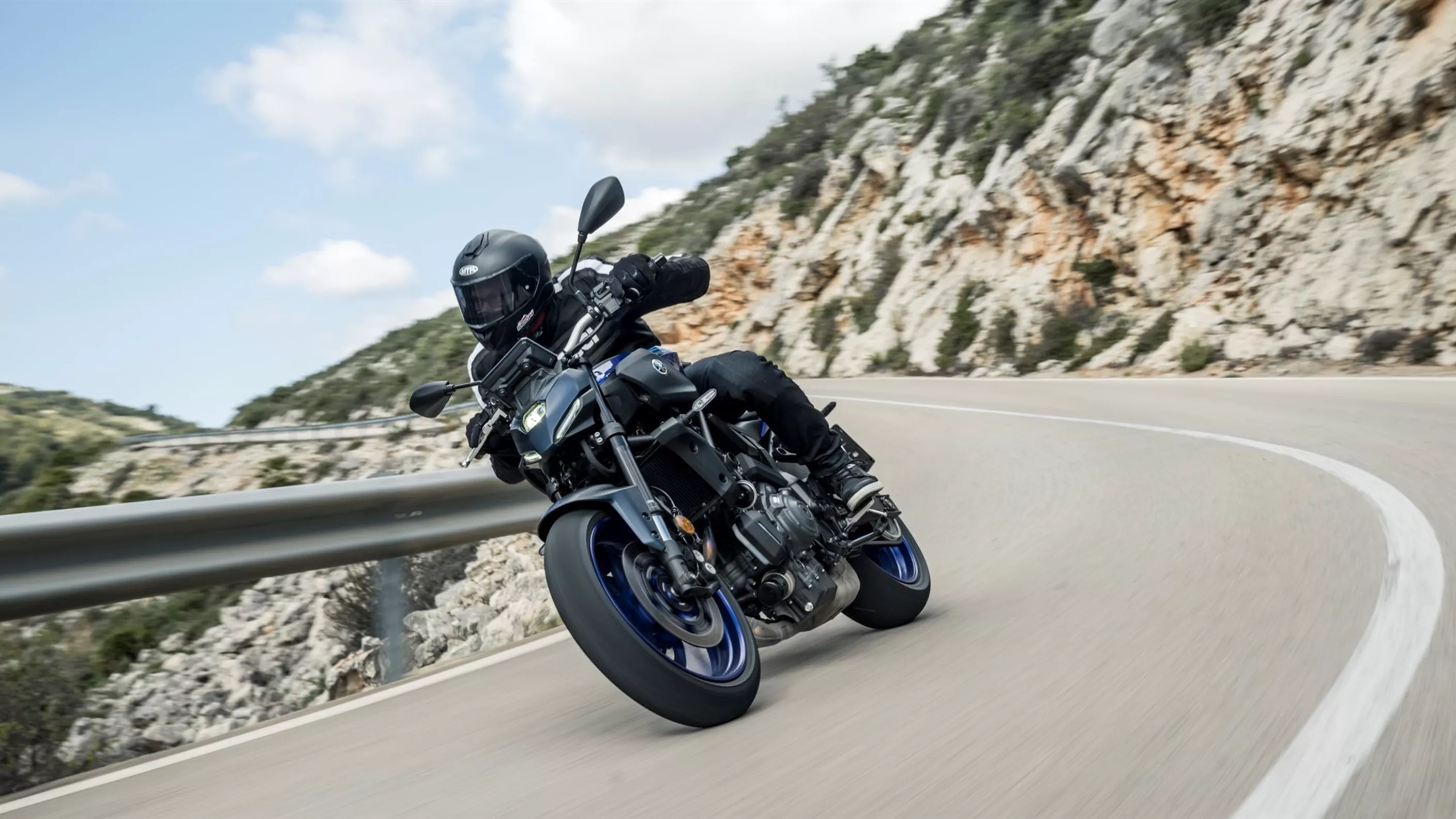
Yamaha MT-07 2025 Review
The Best Yamaha MT-07 Yet
The MT-07 is a crucial model for Yamaha. Since its debut in 2014, around 195,000 units have been sold in Europe alone. For 2025, Yamaha has given the MT-07 a significant update, aiming to mature the fourth generation and appeal to even more riders. It can already be revealed: It has succeeded. The new Yamaha MT-07 is undoubtedly the best we've ever had. However, this success could also turn into a luxury problem for Yamaha and its dealers.
&width=72&height=72&bgcolor=rgba_39_42_44_0&mode=crop)
Philipp
published on 30/03/2025
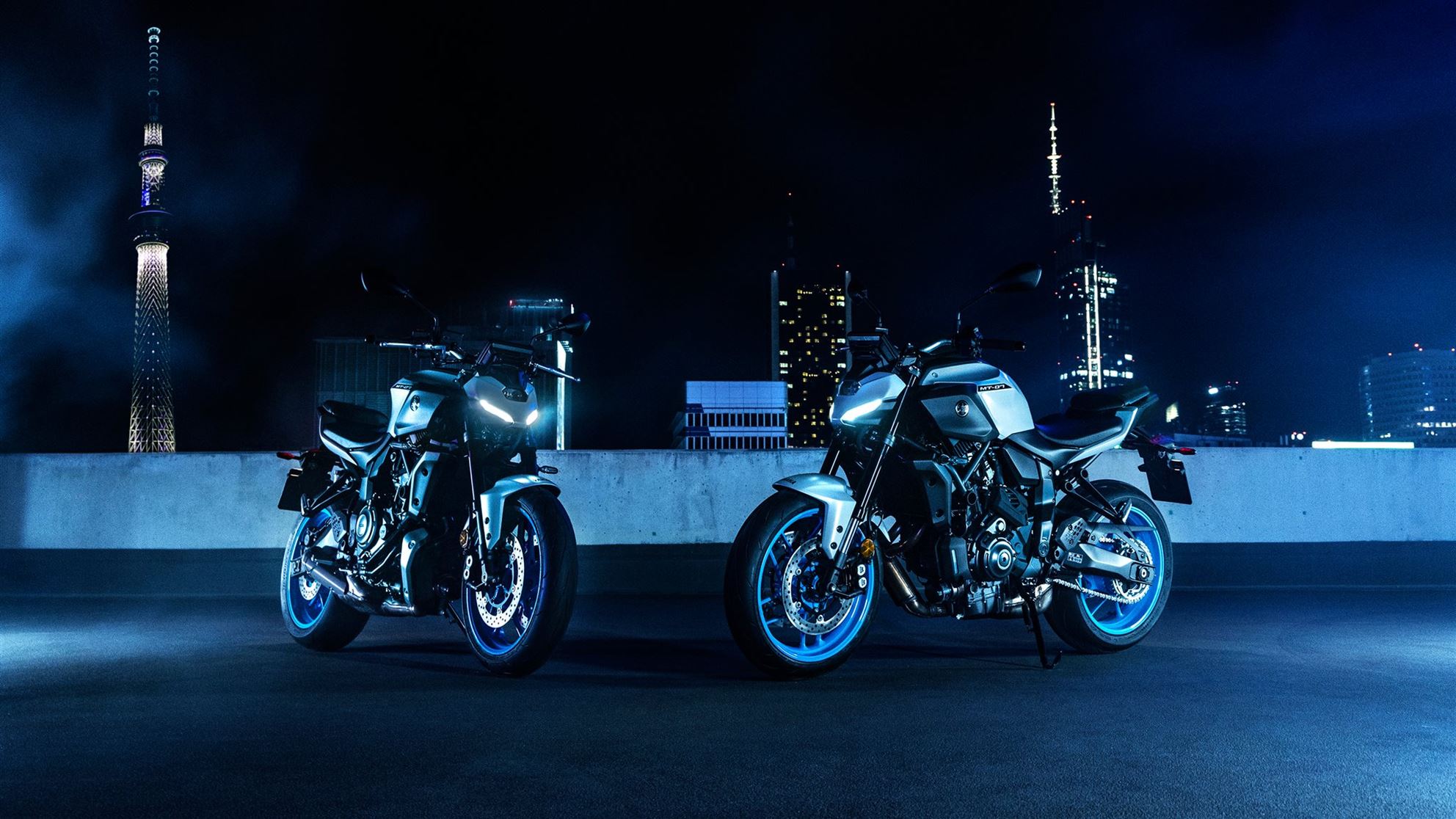
The new MT-07 closely resembles the MT-09.
The Yamaha MT-07 Has Matured
The MT-07 has been a bestseller for several reasons: Since its launch in 2014, it has always offered a lot of bike for the money. The biggest selling point so far: the inline twin engine (dubbed CP2 by Yamaha) that delivers torque-focused performance, always finely tuned to bring smiles to both beginners and seasoned riders on the road. The sound was bold, the throttle response, rev-happiness, and power delivery nearly flawless. That's how you make a roadster engine—period.
Additionally, Yamaha equipped the MT-07 with a solid but unremarkable chassis. The bike was rather small and compact, with a somewhat underdamped suspension (especially the fork), which caused it to dive significantly during late, hard braking, practically bringing the bike to its knees. For beginners, this was perfectly adequate, but for more advanced riders, it was a bit too soft. Yamaha made improvements, but competitors quickly caught up and surpassed the MT-07 in recent years. The Suzuki GSX-8S, in particular, offers a very harmonious suspension in this class and sets the benchmark. In terms of engines, the Honda CB 750 Hornet now leads the class. Moreover, the MT-07 was lacking a modern electronics package.
But here's the good news: Yamaha has addressed all of this and packed it into the fourth generation, without losing the accessible naked bike character that appeals to almost everyone.
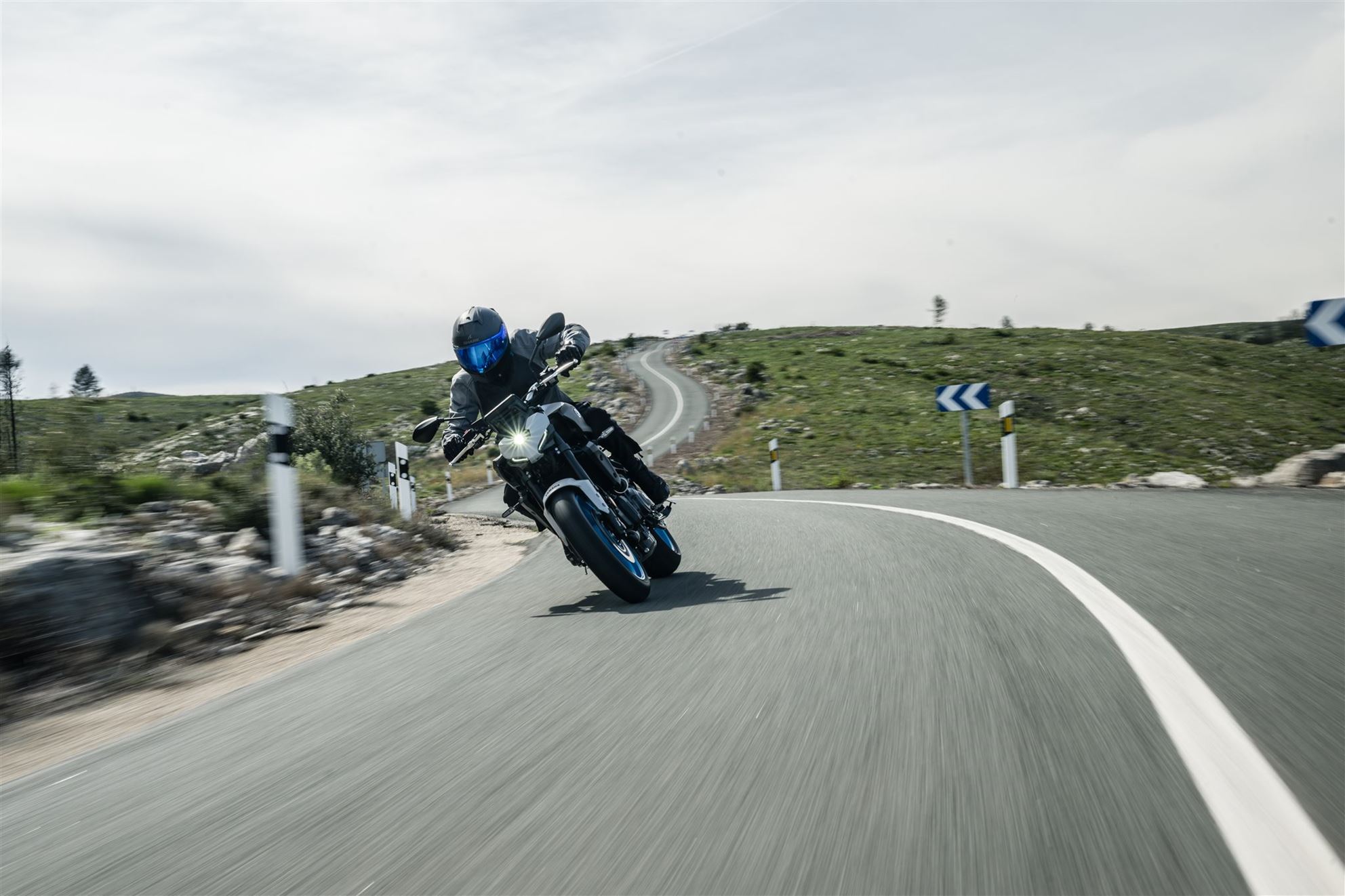
Better Than Ever - The New MT-07.
Updated Suspension on Yamaha MT-07 – Smooth Handling
Up front, a new 41-mm USD fork from KYB (non-adjustable) is now featured. It's clamped into a new, lighter aluminum triple clamp (-400 grams), providing notably better damping along with improved aesthetics. At the lower end of the fork, twin radial calipers from Advics with four pistons each bite into the unchanged 298 mm discs. This not only looks more modern and sporty, but it also rides that way. Kudos to the brakes here: although the disc and pad combination remains the same, the braking feel is slightly more precise. Unfortunately, non-maintenance-free rubber brake lines are still used.
Additionally, the bike now sports lightweight Spinforged wheels—a Yamaha patent that allows for lighter construction while maintaining robustness. The fork now offers significantly more feedback and reserves, no longer diving as much under braking, and provides hydraulic damping support in every riding situation. The setup is dialed in such a way that even short, sharp jolts are well absorbed without causing handlebar shake. A truly significant improvement over the previous three generations. With the front end of the new Yamaha MT-07 now so much better and sportier, the main frame needed adjustments, along with the swingarm and rear suspension (the shock is adjustable for preload and rebound).
Yamaha claims the chassis is 13 percent stiffer overall. You can feel it with every meter ridden—definitely a good thing. The handling remains unchanged: the bike turns in precisely and nimbly, but now maintains stability and predictability for longer. Paired with the immaculate brakes, every corner entry—whether slow or fast—can be hit spot on. The added stability from the new suspension brings the MT-07 noticeably closer to its bigger sibling, the MT-09.
This is also due to the new, improved, and slightly more aggressive ergonomics: the handlebar is now wider and 2.2 centimeters lower, giving the rider more feedback from the front wheel. The footpegs are positioned one centimeter lower but scrape much later than on previous models due to the improved suspension and tighter frame positioning. And that's despite a more relaxed knee angle—definitely a plus for taller riders over 1.75 meters. Together with the new Dunlop Sportmax Q5A tires, the MT-07 delivers easy, predictable handling that leaves you wondering why it wasn't always this way. Simply a great improvement—without any downside.
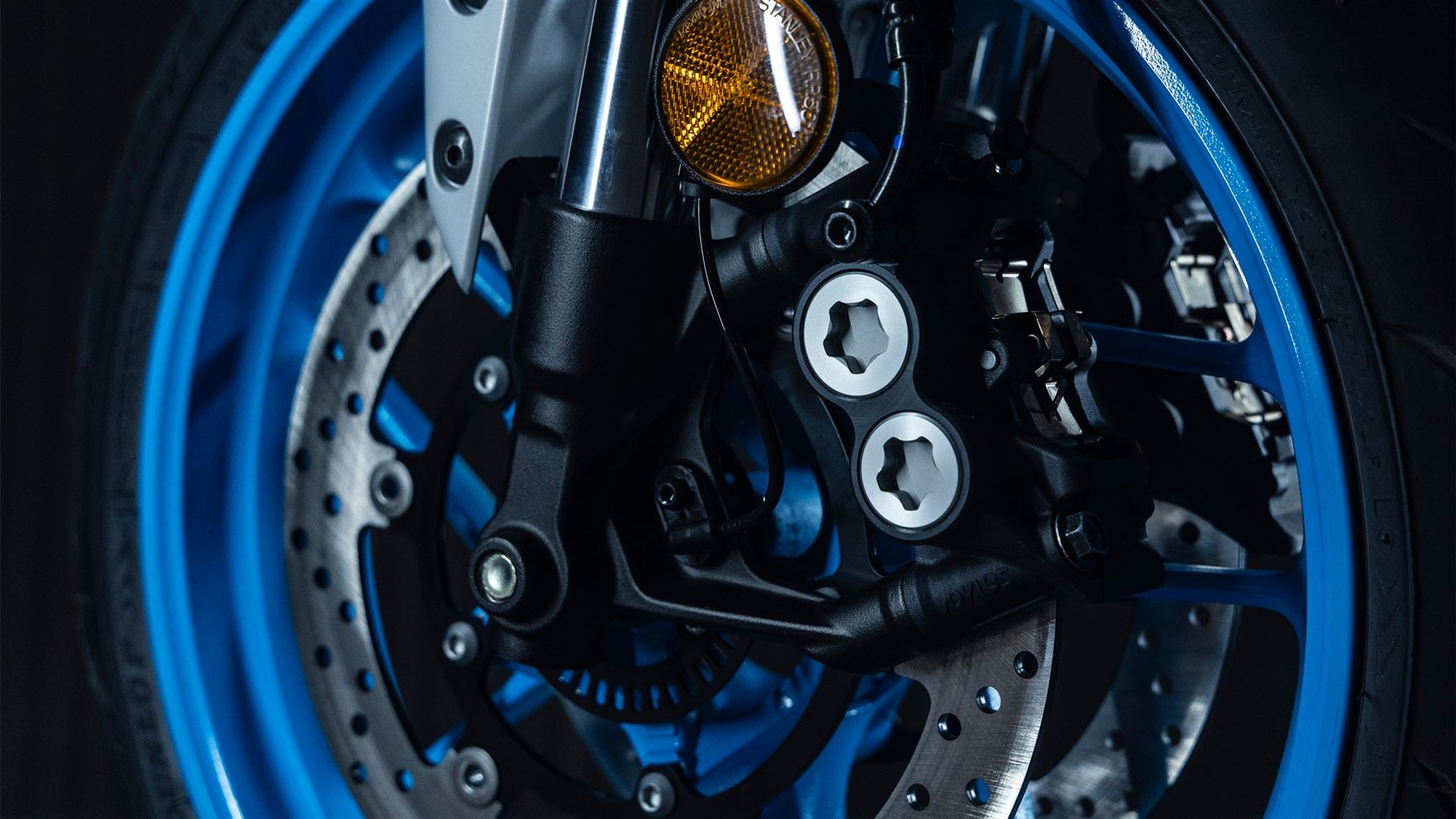
New Brake System, New Fork, Major Improvement.
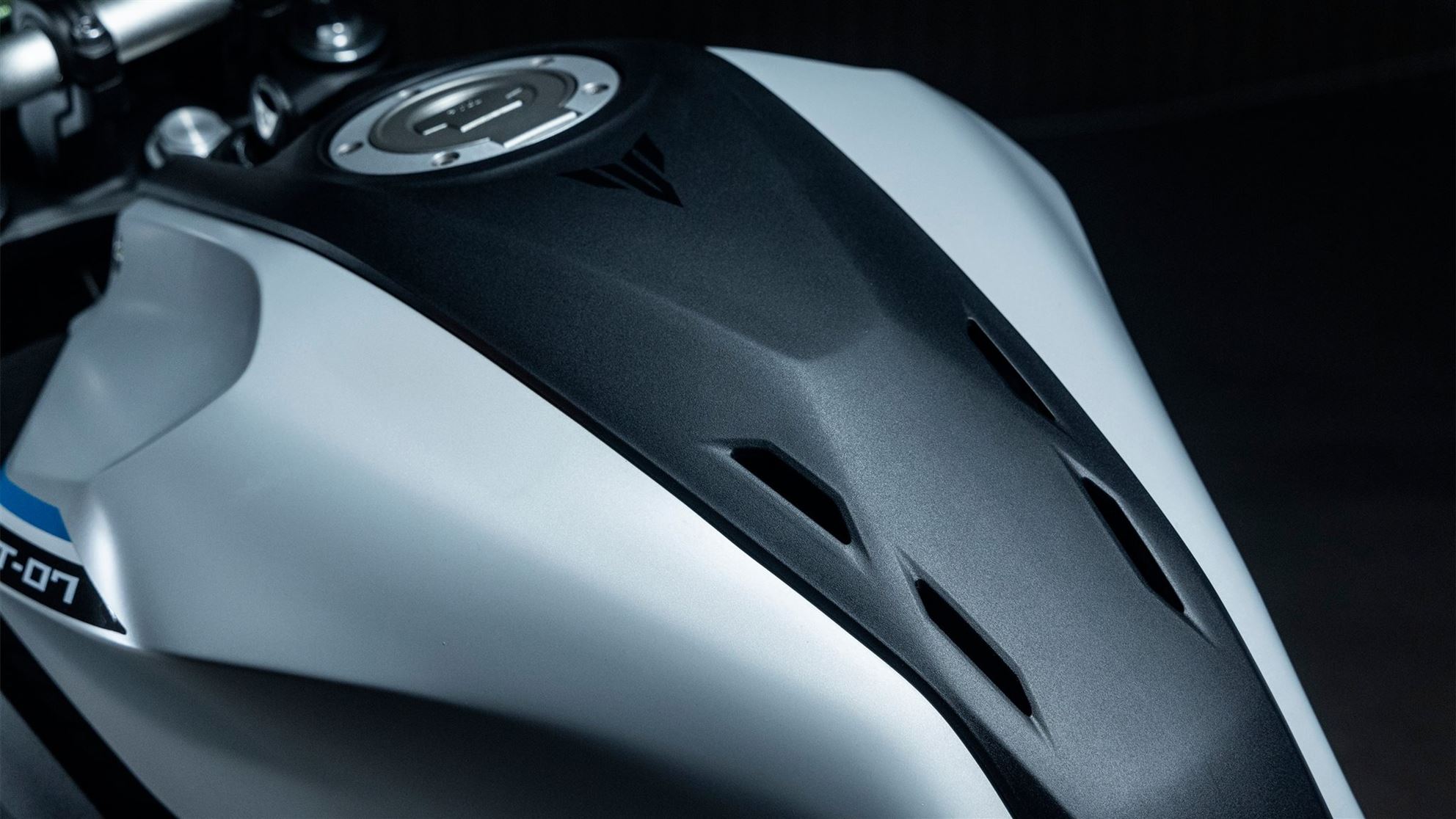
The four small slits in the tank cover enhance the rider's experience with a cool sound.
Yamaha CP2 Engine – Everything Stays Better
Not much has changed structurally with the engine: the parallel-twin still extracts 73.4 PS (54 kW) from 689 cubic centimeters at 8,750 RPM and 68 Newton meters of torque at 6,500 RPM. Nice: Despite the Euro5+ updates, Yamaha's engineers managed to boost mid-range torque, meaning you get more grunt earlier. However, this wasn't particularly noticeable during the test ride, as there has never been much criticism of the CP2 engine in the MT-07, and this holds true for the 2025 model as well.
A neat feature from Yamaha: to maintain the sporty sound despite stricter regulations, there are now four slits in the middle tank cover. Beneath them is the "Sound Enhancer," which channels the intake noise to the rider. This works excellently in practice, as you always have a potent, bassy twin-cylinder sound in your ears while riding the MT-07. Yamaha states the engine's fuel consumption at 4.1 liters per 100 kilometers, achievable only when riding moderately. If you let the CP2 engine rev freely, more fuel will flow through the combustion chambers.
The fuel tank capacity remains at 13 liters, allowing for approximately 250 kilometers of range even with very spirited riding. The new Yamaha MT-07 is also optionally available as a 48 PS (35 kW) A2 variant.
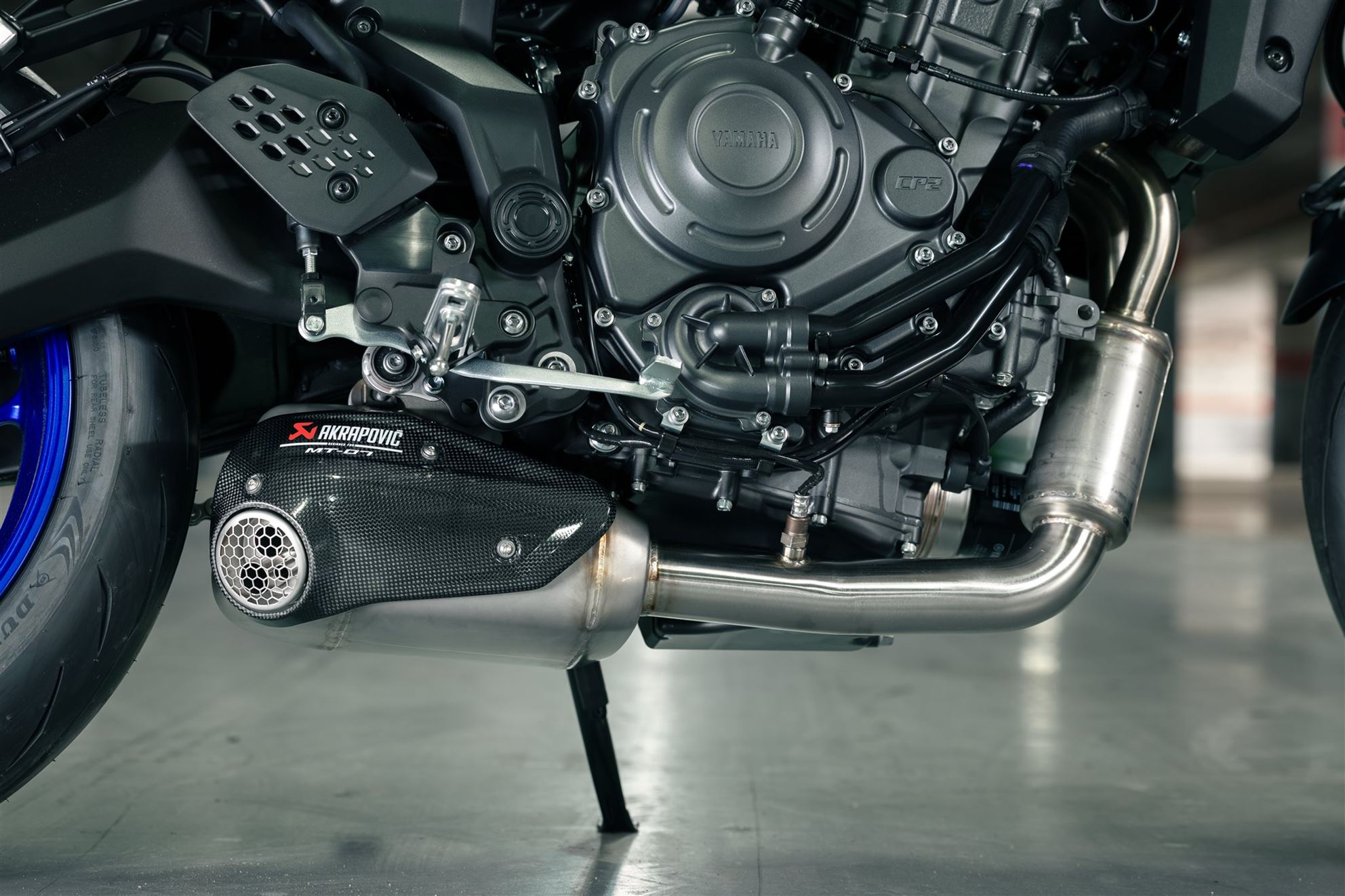
Optionally Available: Akrapovic Exhaust
MT-07 Highlight: Y-AMT – Two Transmission Options
Technically and in terms of ride dynamics, the new Yamaha Y-AMT (Yamaha Automated Manual Transmission) is the biggest innovation. It's a semi-automatic shifting system based on a conventional gearbox, but it automates the clutch and shifting operations.
At its core, an electronically controlled actuator precisely and swiftly operates the clutch and shift mechanism—entirely without a clutch lever. The rider can choose between different modes: Automatic mode (AT mode), where the system fully takes over shifting, similar to a traditional automatic transmission. Manual mode (MT mode): The rider shifts up or down with a push of a button on the handlebar—no clutching necessary. This is done via the Yamaha-named see-saw switch on the left handlebar control. The system no longer includes a clutch lever or shift pedal.
The AT mode has two sub-modes: D and D+. In D+, the shift logic is sportier. This means the MT-07 shifts up later, allowing higher revs, and downshifts earlier, enabling riding in lower gears and high RPMs, such as when braking late and aggressively into corners. Y-AMT weighs only 2.8 kilograms and increases the curb weight from 183 to 186 kilograms. Y-AMT can be understood as both a comfort and performance feature.
During our test ride in the Spanish hinterland of Alicante, where you practically fall from one tight corner into the next, we were able to thoroughly test the system. Also available: a conventional 6-speed manual transmission, optionally with a quickshifter for clutchless up and downshifting. Unfortunately, we were unable to try the quickshifter.
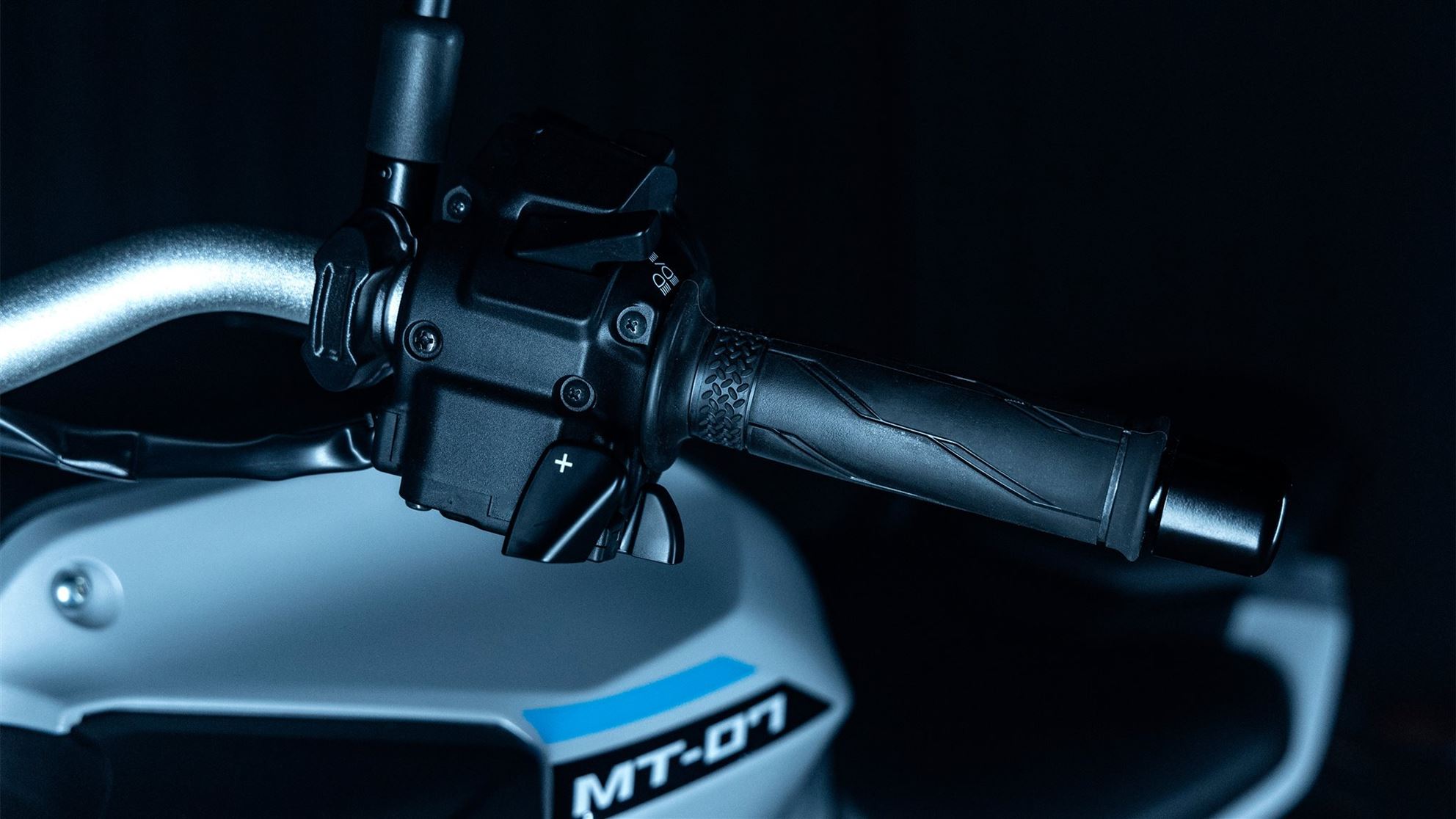
The Shift Unit for Y-AMT.
Experience with Y-AMT on the Yamaha MT-07 2025
Y-AMT isn't entirely new; it's already known from the big sister MT-09. However, this transmission hadn't been available for the CP2 engine until now. The switch to a new ride-by-wire system for the MT-07 (and all other models with a CP2 engine, like the Ténéré 700 or Tracer 7) now makes implementation possible. According to Yamaha, the shift time is 0.1 seconds in any riding situation, both up and down.
In manual mode (MT), the gear changes are indeed swift. A push of the see-saw switch (which is more of a rocker) and bam, the gear is changed. However, it takes some time to get used to shifting with your left hand instead of your left foot. Surprisingly, downshifting is noticeably smoother than upshifting. When using the system while leaning, you can feel a brief jolt during upshifts. It's not bothersome, but a well-tuned quickshifter handles gear changes more smoothly and less noticeably.
In downshifting, Y-AMT is on par with a quickshifter, and there are no complaints. The shifting speed is entirely sufficient and cannot be faster conventionally. It's a bit puzzling that when riding downhill, you should generally downshift earlier, as you miss some engine braking. Especially for a twin-cylinder, which typically has higher engine braking, this is something that needs to be programmed into the rider's brain.
Switching to D or D+ mode, the MT-07 handles all shifting and clutch operations automatically. It's noticeable that despite the sportier setup of the D+ mode, a gear too high is often selected when riding downhill. This means that when you want to maintain throttle through a turn, you need to give significantly more gas because the chosen RPM is lower. Here, you feel that the system is more conservatively tuned for fuel saving.
Conveniently, even in automatic mode, the rider can override the system using the shift paddle, manually shifting up or down as needed. After a short period (fairly quickly), Y-AMT resumes control of the shifting. Y-AMT is particularly practical in urban traffic or on very tight mountain roads when you're already tired or simply not in the mood to shift. The system cleverly prevents the engine from stalling, even when slowly and carefully rolling into a hairpin turn.
This can be a real safety plus, especially for beginner riders. If you opt for Y-AMT, cruise control comes standard. Cruise control isn't available with the conventional transmission, even for an extra charge. Therefore, you need to decide early on (at the time of purchase) how important this feature is to you. After the test in Spain, it's safe to say that Y-AMT is absolutely production-ready and will surely find its fans quickly.
The system isn't perfect yet, especially if you prefer a sportier ride. An interesting note for tech enthusiasts: the Y-AMT and the 6-speed manual transmissions aren't identical. Y-AMT uses a different gear sequence, namely N-1-2-3-4-5-6. This makes the shift logic simpler and eliminates the need for a parking brake. You can simply park and start the motorcycle in first gear.
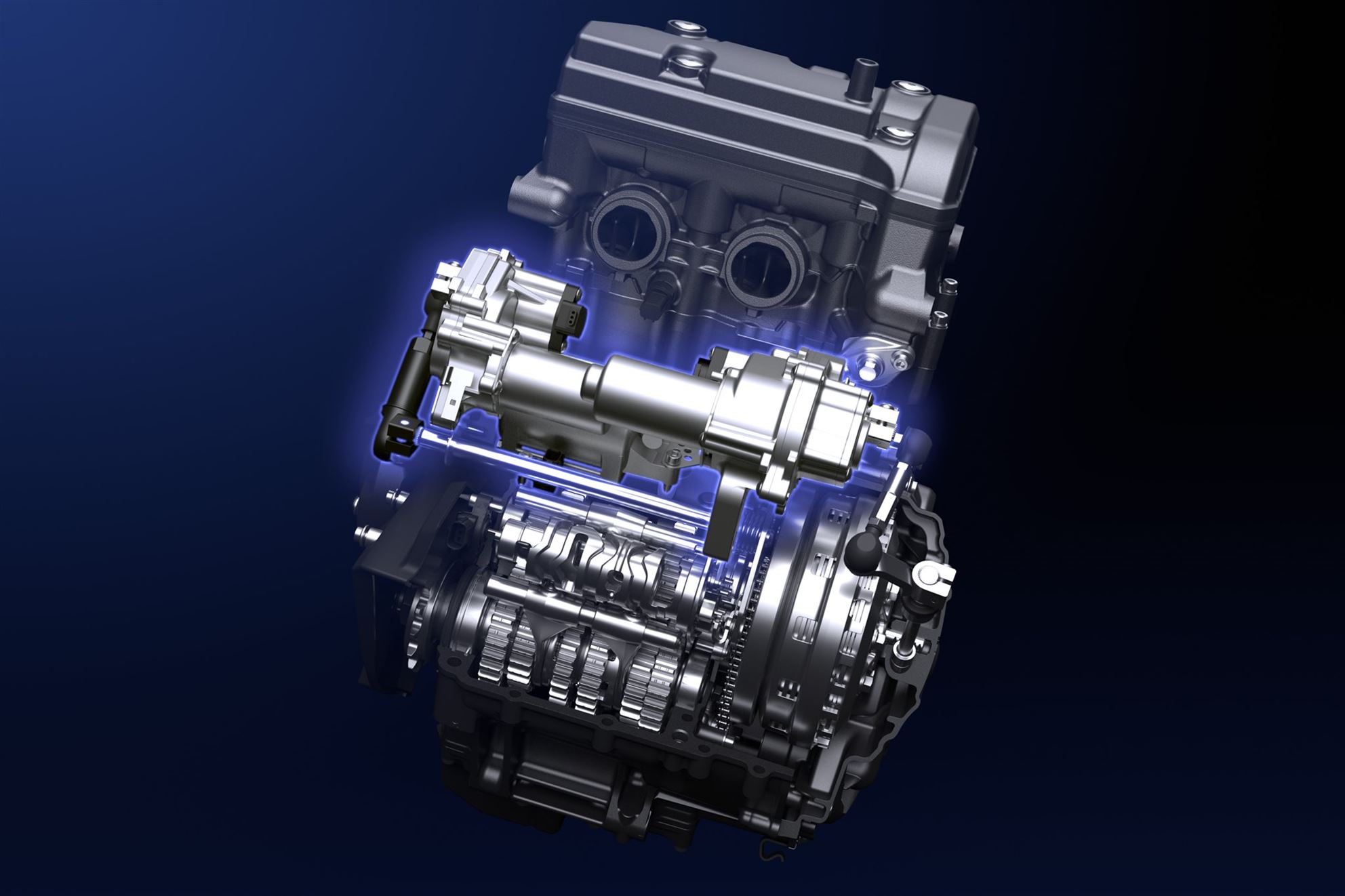
The Y-AMT mechanism weighs only 2.8 kg.
More Rider Aids for the Yamaha MT-07 2025
In addition to updates in the suspension, transmission, and design, the major model refresh also extends to the electronics, which will likely please many enthusiasts. Up until now, the MT-07 was rather spartan when it came to rider assistance systems. Thanks to the previously mentioned ride-by-wire system, there are now three different riding modes available: Street, Sport, and Custom. These modes differ in power delivery and traction control settings, which is being introduced for the first time on the MT-07.
It's important to note that the fourth-generation Yamaha MT-07 does not have a 6-axis IMU, meaning ABS and traction control do not operate based on lean angle. This feature remains exclusive to the larger MT-09. However, during our test, the ABS and traction control were perfectly tuned. As long as there isn't extremely low grip (such as smooth asphalt or wet conditions), the traction control is hardly needed because the CP2 engine's linear power delivery and the grippy Dunlop tires effectively put power to the pavement in almost any riding situation without slip.
Nonetheless, the traction control is fully deactivatable. To do this, you simply need to disable the TC in a submenu on the 5-inch color TFT display. If you turn the ignition off and back on, you have to repeat the process, as the traction control automatically reactivates. This is a deliberate safety decision by Yamaha for the rider. Those who enjoy wheelies will need to disable the TC and should opt for the conventional transmission. Then, thanks to the MT-07's high torque, wheelies become a breeze.

The new 5-inch TFT display is well-executed and highly informative.
Design Resembles the Yamaha MT-09
The new headlight design with LED units strongly resembles that of its bigger sister, the MT-09. The same goes for the controls, the display, and the overall finish of the bike. Visually, the MT-07 stays true to its original design, but with the USD fork, radial calipers, and the new headlight, you might have to look twice to distinguish it from the MT-09—especially from the front.
Three colors are available: Ice Storm (a matte gray with light blue wheels), Icon Blue (Yamaha blue with a matte blue mask and fender, and blue wheels), and Tech Black. There's a comprehensive range of genuine accessories, totaling 96 parts, including 32 new items for the fourth generation of the MT-07, with the Akrapovic system included.
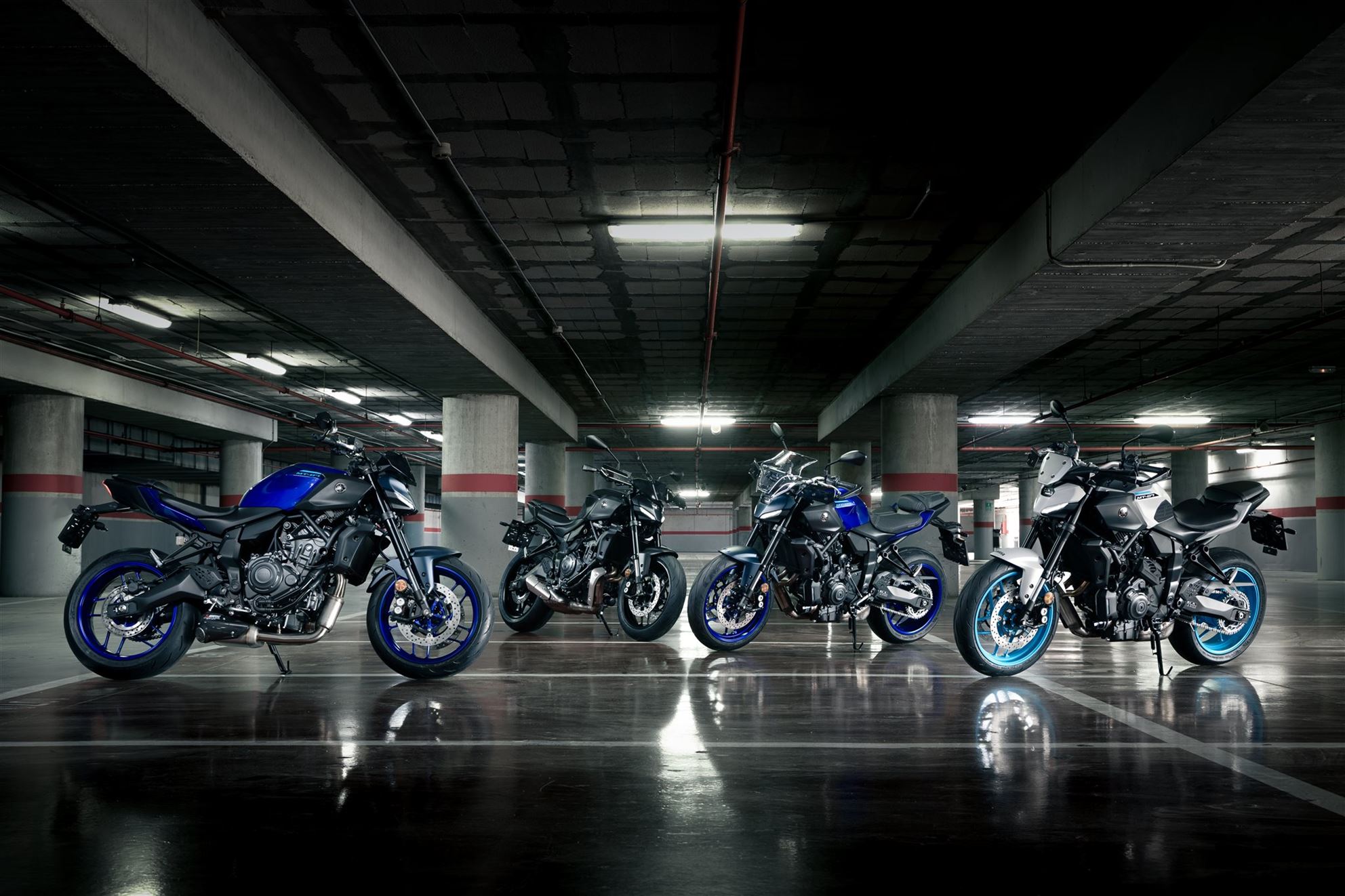
The MT-07 can be easily customized with an extensive accessory program.
Yamaha MT-07 / Y-AMT 2025 Pricing
In Germany, the Yamaha MT-07 starts at 8,524 euros, with an additional 500 euros for the Y-AMT. In Austria, the MT-07 starts at 8,799 euros, with a 600-euro surcharge for the Y-AMT. In Switzerland, the MT-07 starts at 8,590 CHF, and with Y-AMT, it costs 8,990 CHF (400 CHF extra). The models are already available at Yamaha dealers.
Experiences with Vanucci Motorcycle Gear and MTR Helmet
Since the Yamaha MT-07 is aimed at attracting younger riders and beginners, we also wanted to try out affordable motorcycle gear specifically for that target group during the MT-07 test.
The helmet is from Louis' own brand MTR and is called S-1 Fiber in matte black. The helmet meets the latest ECE 22.06 standard and is relatively lightweight at around 1.45 kilograms. It features an integrated sun visor, and the clear visor is prepared for a Pinlock anti-fog insert. We also ordered the optional tinted main visor. The helmet stands out with its low price, currently at 149.99 euros, and its very comfortable fit. The inner lining is soft and very adaptable. Generally, the helmet is well-sized for head fit, but the outer shell is rather compact.
This is noticeable as there's not much space between the lips and chin area. There are two vents (forehead and chin), which are easy to operate even with motorcycle gloves. The forehead vent provided noticeable cooling, while the chin vent was rather subtle. The ratchet closure is nicely padded, enhancing the high wearing comfort. A helmet that offers a very attractive price-performance ratio.
The jacket is from Vanucci, Model RVX-3. It's a textile jacket with a slightly sporty cut, water-repellent, and pleasantly windproof. A warm inner lining can be removed, and the soft protectors on shoulders and elbows fit well. The jacket handled a multi-hour rain ride in city traffic while staying dry. Only at the sleeve ends can some moisture seep in. Practical: the ventilation openings on the upper arms for high temperatures in summer. With the inner lining, the jacket is suitable for the entire season. We also added a thicker back protector. For just under 250 euros, the jacket leaves little to be desired.
The VUT-7 motorcycle jeans, also from Vanucci, are currently on sale for 219.97 euros and are primarily comfortable and suitably cut for motorcycle use. The soft hip protectors are large but not obtrusively sized. The soft knee protectors are a bit fiddly to fix with two Velcro straps, but they are also height-adjustable. The cut is slightly wider than normal jeans of this size, and the pants are a bit longer. This is sensible for motorcyclists, as the knee angle can otherwise leave ankles exposed. During the first rain ride, the pants barely bled color, which is not uncommon for jeans. The workmanship and material thickness are impeccable.
The Vanucci VUB-5 motorcycle boots were particularly impressive. Thanks to SympaTex, these sporty-looking motorcycle sneakers are pleasantly waterproof and keep feet reliably dry. However, there's no real ventilation, so feet can get slightly sweaty. The fit is normal, neither too tight nor too loose, and the size is similar to sports shoes.
The only drawback with the shoes: they have both a lacing system and a side zipper. Normally, zippers are intended so you don't have to lace and unlace the shoes every time. But if you tie them tighter, the zipper length isn’t sufficient to take the motorcycle shoes on and off without unlacing. The sole is grippy, even in wet conditions.
The lightweight Vanucci VCT-1 gloves are rather inconspicuous companions in daily motorcycle life. The knuckle protection is comfortably shaped, as are the fingers. A slight reinforcement on the palm doesn't interfere with riding. These gloves are more suitable for warm temperatures around 20 degrees and above, as they are not particularly windproof. The entire outfit costs under 850 euros and is definitely recommended. There are significantly less comfortable motorcycle gear options available for more money.
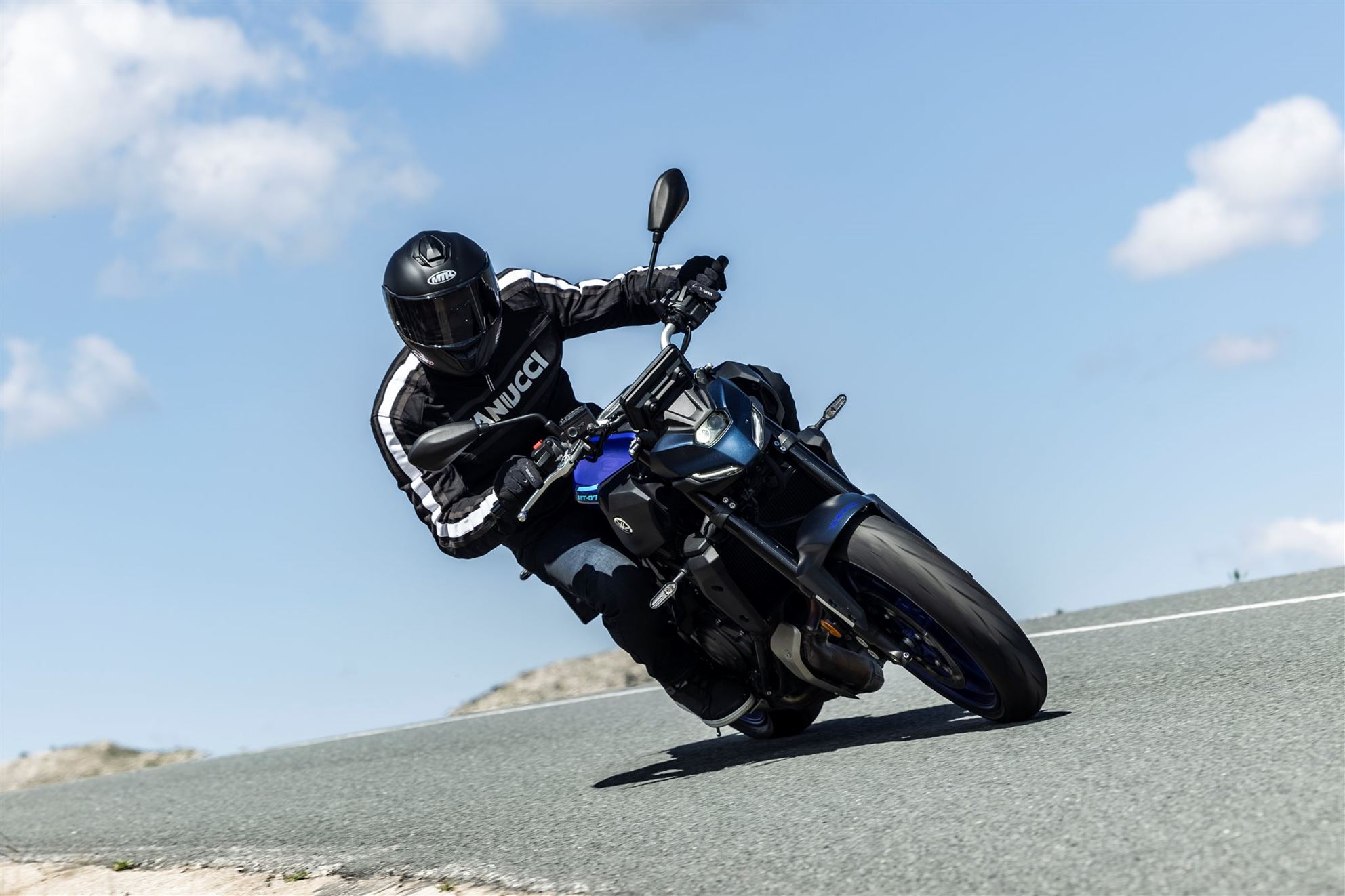
Cool Gear for Under 850 Euros! Available at Louis.
- How much does a Yamaha MT-07 cost?
- Here you will find an overview of the price level of new and used motorbikes!
&width=60&height=60&bgcolor=rgba_39_42_44_0&mode=crop)
Yamaha MT-07 2025 - Experiences and Expert Review
Philipp
The new Yamaha MT-07 is the best it has ever been. The criticisms and wishes of MT-07 riders have been heard and addressed. The new MT-07 performs better and more stably in every aspect, widening its appeal: both beginners and seasoned riders will handle it well, as it is now a more mature and powerful motorcycle. It has closed the gap with the competition, though it still lags 10-20 HP behind in pure engine performance. However, that's not a major issue, as the CP2 engine remains a guarantee for riding fun and a wide grin under the helmet. Whether to opt for the optional Y-AMT transmission should definitely be determined through a test ride—the extra cost is reasonable. Therefore, kudos to the Yamaha engineers for significantly enhancing their bestseller without altering the MT-07's character. However, Yamaha faces one issue: the residual values of the previous three generations are likely to drop, as the differences with the current generation are noticeably substantial. And as we know, the better is the enemy of the good.
More from 1000PS Magazine
Yamaha MT-07 2025 Review Images
Source: 1000PS









































































